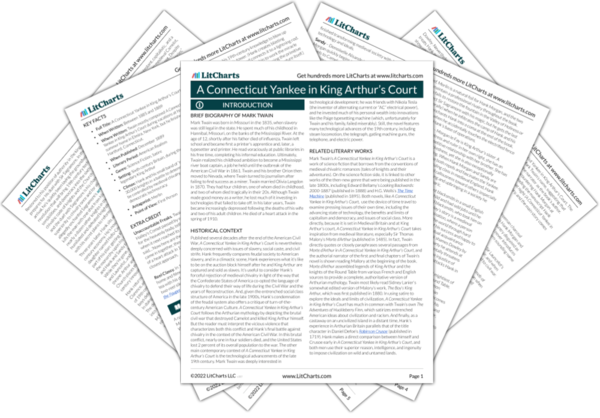As this chapter draws to a close, Hank rides with Sandy, and his thoughts freely wander between her story and memories of his own time and place. Hearing the history of the knights he defeated seems to ignite his own homesickness and nostalgia; no one in Sandy’s stories has come as far or as mysteriously as Hank himself. Hank shows his attachment to modern technology in the way his memory of his girlfriend specifically involves calling her on the phone.
